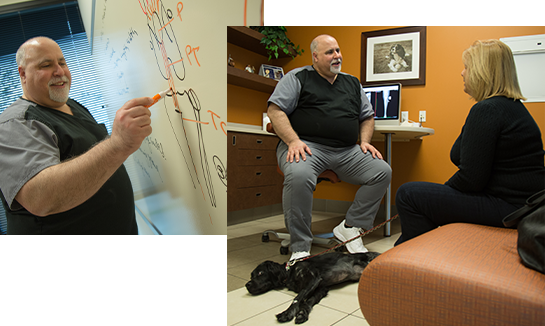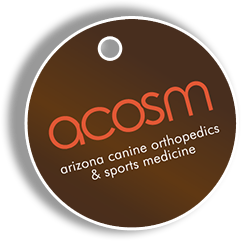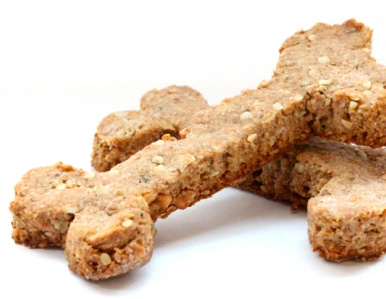Canine Hip Dysplasia, The Goal is Prevention
Canine Hip Dysplasia, The Goal is Prevention.
Haney, Pamela S et al. “Effectiveness of PennHIP and Orthopedic Foundation for Animals measurements of hip joint quality for breeding selection to reduce hip dysplasia in a population of purpose-bred detection dogs.” Journal of the American Veterinary Medical Association vol. 257,3 (2020): 299-304.
Key Point: PennHIP DI values were an effective measurement of hip joint quality for selecting breeding stock, and using these values significantly improved hip joint quality in a population of purpose-bred dogs.
Canine hip dysplasia (HD) is the most inherited orthopedic disease in dogs. Hip dysplasia commonly occurs in dogs due to abnormal development of the coxofemoral (hip) joint and is characterized by laxity (loosening) of the joint, (subluxation or luxation of the femoral head from acetabulum) and eventually degenerative joint disease. There are several factors that contribute to the development of hip dysplasia in dogs. Hip dysplasia is a genetic disease with highly heritable traits, and there is an increased risk in overweight and very active dogs. Dogs with hip dysplasia often show mild signs of lameness which becomes more pronounced after exercise due to the instability of the joint and the degenerative changes taking place. Options for treating hip dysplasia include medical management or surgical intervention. The best option for treatment may be prevention, although many believe the disease is too inbred to do anything about. (Link to https://www.arizonacanineorthopedics.com/hip-dysplasia.html for more information on treatment options once HD has been diagnosed)
Briefly, there are a multitude of diagnostic modality to confirm the diagnosis of HD. Radiographs (X-rays) of the hips are by far the most common diagnostic utilized. In the United States, the two most common views are the OFA style radiograph series, and the PennHIP radiograph series. The OFA style looks at the subjectively appearance of the hip at 2 years of age and older; the PennHIP can be performed as early as 16 weeks of age and places the hips in a weight bearing stance (or distracted) to evaluate and quantify the amount of laxity is in the joint. A landmark study by Dr. Powers in 2010 revealed the inferiority of the OFA style technique, where 52-94% of OFA-rated fair to excellent had moderate laxity on PennHIP evaluation, thus a moderate to high-risk of developing osteoarthritis secondary to hip dysplasia.
Until recently, neither technique has been shown to be superior in improving the hip joint quality in a population over time. Dr. Haney and colleagues evaluated 615 purpose-bred detection dogs from 2001 until 2017. In the first 13 years, dogs selected for breeding were evaluate and chosen based off of OFA scores only, whereas the subsequent 3 year dogs were selected and assessed by both OFA and PennHIP. They found that using OFA only did not show an improvement in hip joints over time. After implementing selective breeding with incorporation of PennHIP evaluation, the percentage of dogs with non-dysplastic hip joints (normal hips) increased by 22%. This was statistically significant and supports the role of using PennHIP to choose breeding stock dogs, thus potentially positively affecting the hip joints of the subsequent generations. See figure 1 below.
So how does this information help us? It takes dedicated and informed owners, breeders, and veterinarians to help reduce canine HD in a population! Pedigree depth should be established and only dogs with non-dysplastic hip joints should be mated, thus applying positive selection pressure to at-risk breeds. To our knowledge, the best current diagnostic for this effort is PennHIP evaluation. If you are an owner, ask your breeder about the sire and bitches hip evaluation - did they have a PennHIP done? If not, ask them to! Did you just rescue a dog from the shelter and have no idea what you gorgeous mutt is predisposed, ask your veterinarian about PennHIP screening! Have you had a dog with HD before and want to see if your dog is at risk, this can be done at the same time their neuter/spay, potentially earlier!
Brian Petrovsky, DVM, Diplomate, American College of Veterinary Surgeons (Small Animal)


Get Informed
Schedule a Consultation
Make no mistake, all surgical procedures are serious. Get the information you need and know your options. Then make an informed decision. Like any service, not all veterinary services are equal. Call to schedule or ask questions.
Call our clinic at 480.998.5999
or Email us.
FAQ
What Makes ACOSM Stand Out?
We pride ourselves on doing things differently. We insist on providing premier service to our patients and their caregivers. There's a saying, "Price is what you pay; value is what you get." At ACOSM, delivering on value is our mission.
We're proud of our experience, skill, and outcomes; it puts us in a category of one, which means you'll experience things with us not promised by any other veterinarian in AZ.
Dog Blog
Distal Femoral Osteotomy for Comprehensive Treatment of Medial Patella Luxation
Three-Dimensional Printed Patient Specific Guides for Acute Correction of Deformities
Comparison of Arthroscopy and Arthrotomy for Diagnosis of Medial Meniscal Pathology
Second Look Arthroscopic Findings After Tibial Plateau Leveling Osteotomy
Resources
New Patient Registration Forms
- New Patient Packet

- New Patient Packet - Online
 New online form!
New online form! - Patient Referral Form

- Patient Referral Form - Online


